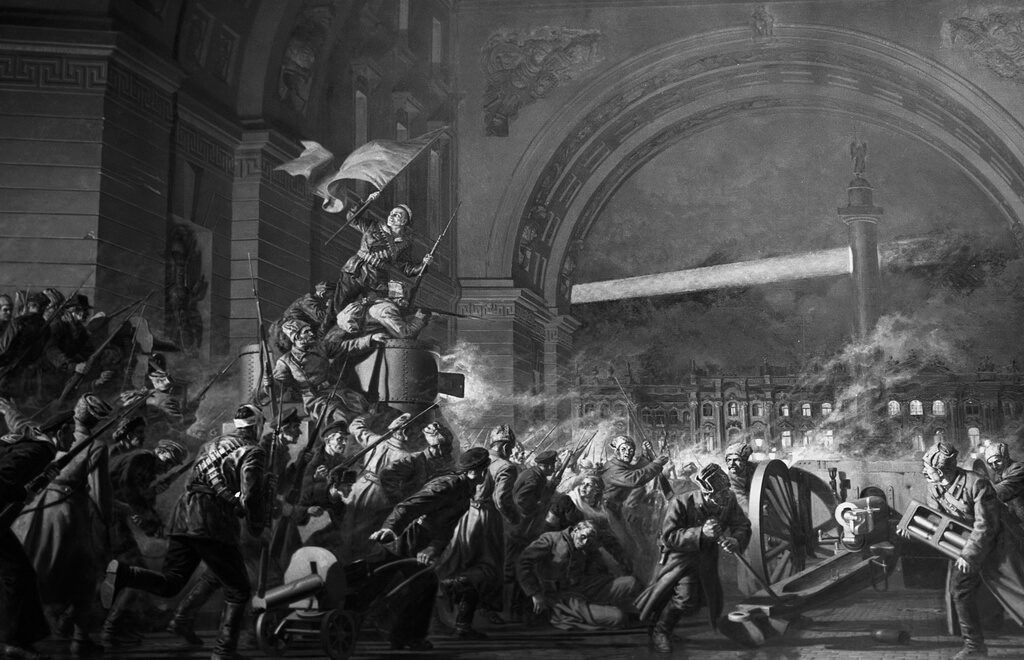Mikhail Piotrovsky, the State Hermitage museum director, did what nobody could do before him over the course of 100 years. He breathed a new life into a clock that was stopped not just a centenary ago, but at the very moment when Bolsheviks overthrew the Provisional Government and established their dictatorship that lasted till 1991.
The night on October 25/26 by Old Style (and November 7/8 in accordance with New Style) was some kind of historical conjunction, with many roads leading here and many (possible) ways going further away, one of which history finally chose.
Nicolas II of Russia’s abdication, the inability of the Provisional government to meet people’s basic needs, consistent failures of the Russian army on battlefields of World war I, Vladimir Lenin’s energy and his maniacal tenacity to seize the power – all these processes, events, and their consequences met at the Small (White) dining room at the Winter Palace, the main building of the Hermitage museum, where 13 members of the Provisional government had gathered to discuss… no matter what they had been discussing as their power had become hardly tangible by that moment.
At about 02.10 a. m. on 26 October 1918, revolutionary soldiers and seamen after long questing across the palace in the full dark finally heard some voices and came in the room to arrest the bureaucrats and get them behind bars at the Peter and Paul fortress.
02.10 is the time when someone stopped a mantel clock in the room as a protest to the Bolsheviks’ coup, the moment when history took the route that significantly influenced the practicalities of life of almost all people across the globe. Everything that happened afterward, the foundation of the USSR, Stalin’s repressions, the victory in World War II with the allies, the first manned flight to Space, the Caribbean crisis (the Cuban missile crisis), the Cold war, the Perestroika, and so on, all this emerged from this turning point, starting at 02.10.
The unwound clock heralded the arrival of winds of the revolution.
Since then and till recent days, the clock had never been wound up again serving as one of the symbols of the Revolution for Hermitage’s visitors.
The clock had been in a frozen state as a speechless witness of the historic moment until the director of the Hermitage has wound up it again to mark the centenary of the Bolshevik (Russian) Revolution and cause a burst of applause as it’s seen in the video by Izvestia newspaper:
The mantel clock featuring a figure of a rhinoceros was made in France in the second half of the XIXth century and put into the Small (White) dining room, one of the favorite rooms of Nicolas II of Russia and his family, in 1894.
It’s a symbolic move as Piotrovsky himself sees it. It’s a step forward, a wish to turn the page and live further leaving the 100-year-old event to history. A clock must go on and show the time, after all.
Not everyone is happy with it fearing the repeat of the event. So, yes, sensitive persons can really get nervous as the revolution clock is ticking again…
Cover photo: painting of Pavel P. Sokolov-Skalia The assault on the Winter Palace
